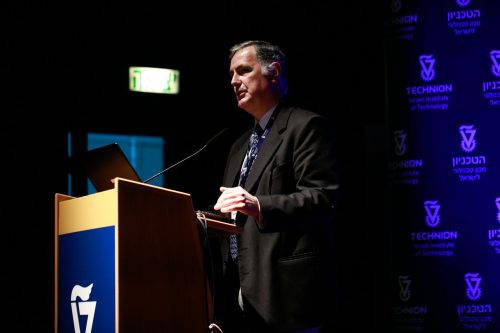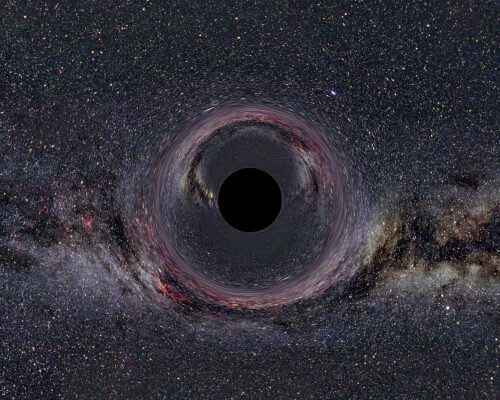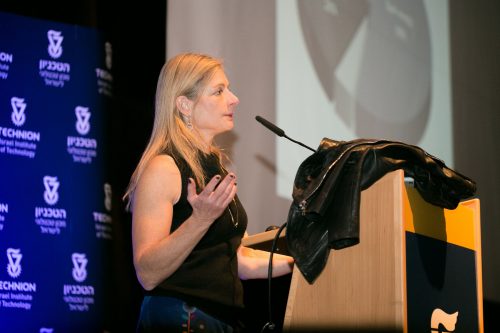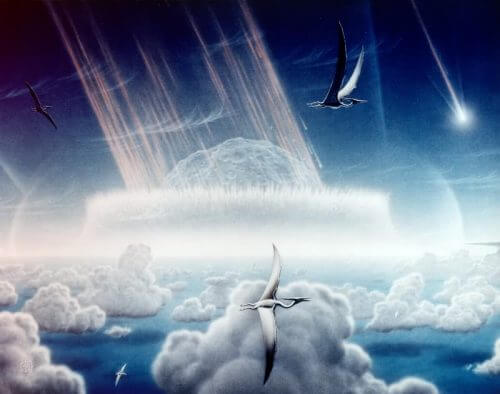More than 600 researchers and students participated in the conference of the Israel Physics Society, including senior physicists from around the world

"I am happy to be lecturing today in a country where it is allowed to use the expression 'based on science'." This is how physicist Prof. Lisa Randall opened her lecture at the Technion, making an ironic reference to the Trump administration's decision Ban the US Centers for Disease Control from using the phrase "science-based".
Prof. Randall's lecture concluded the annual conference of the Israel Physics Society that took place last week at the Technion. The president of the association, Prof. Yossi Avron from the Faculty of Physics at the Technion, noted that more than 600 physicists and physics students participated in the conference - a record number in the history of the association, which was established 63 years ago.
Various topics were discussed at the conference, including the movement of stars around a huge black hole at the center of the galaxy and the activity of the particle accelerator that was recently inaugurated in Jordan and will serve Israeli, Jordanian, Palestinian, Iranian and other scientists. The conference was led by Prof. Amit Keren from the Faculty of Physics at the Technion.
Giorgio Pelucci (Giorgio Paolucci) presented the impressive capabilities of The regional particle accelerator SESAME to be initiated in Jordan In June 2017. The accelerator, operating under the motto "Science for Peace", is a synchrotron with a circumference of 133 meters. It was established with the aim of encouraging scientific cooperation between Israel, Jordan, Egypt, the Palestinian Authority, Iran, Bahrain, Pakistan, Turkey and Cyprus. Plucci, the scientific director of the facility, said that "the world's particle accelerators are concentrated in Europe, North America and the Far East, and there is no doubt that the time has come for the Middle East to have a regional accelerator that will promote science and technology and curb the trend of brain drain to Europe and the United States." Here, at the Technion, this is the first time I can say that the regional synchrotron is not a promise but a reality. "

Prof. Reinhard Gentzel (Reinhard Genzel) recounted accurate observations of A massive black hole at the center of the galaxy And its mass is 3 or 4 million times greater than the mass of the Sun. Gentzel, who received the Technion's Harvey Prize in 2014, is a faculty member at the University of Berkeley and serves as head of the Max Planck Institute for Extragalactic Physics in Gerching, Germany. Black holes are one of the surprising results of Albert Einstein's theory of general relativity, a prediction that is difficult to verify because the black hole is not observable through telescopes. Prof. Gentzel noted that "in the last three decades we have collected a lot of circumstantial evidence thanks to the ESO telescope array in Chile. Happily, we received a lot of help from nature, which gave us thousands of stars whose orbits around the black hole provide us with a lot of information about its properties even though it itself is invisible. Our challenge for next year is to verify additional predictions of general relativity in the environment of the black hole - for example the redshift phenomenon that occurs in light rays as a result of the influence of gravity."
Prof. Eric Verlinda (Erik Verlinde) from the University of Amsterdam presented a new interpretation of general relativity. According to him, this interpretation, based on the entropy of quantum mechanics, allows dark matter to be replaced as an explanation for the gap between astronomical observations and Newton's and Einstein's laws of gravity. Dark matter is considered an existing fact in the science community, but Prof. Verlinda claims that it is possible to "get by without it" through the quantum interpretation of gravity. This interpretation is based, among other things, on the insights of the late Professor Jacob Bekenstein, of the Hebrew University in Jerusalem, regarding the relationship between the theory of gravity and thermodynamics.
Prof. Lisa Randall (Lisa J. Randall), who gave the closing lecture of the conference, told about the attempt to understand what dark matter is and about her latest book "Dark Matter and Dinosaurs". Prof. Randall, a senior physicist at Harvard University, was included in Time magazine's list of the 2007 most influential people (2004), and in the years 1999-1999 she was the most cited in the field of theoretical physics. Prof. Randall is best known as the one who created a revolution in thinking about additional dimensions. According to the Randall-Sondrome model, which she presented in XNUMX with Ramen Söndrome, who was then a postdoctoral student, exists in the universe A crooked fifth dimension which plays a central role in determining the mass of the Higgs particle and the strength of the electroweak interaction.

In her lecture, which was open to the general public, Prof. Randall spoke about dark matter. "The properties of dark matter are not yet clear to us, but its existence is an unquestionable fact,” said Prof. Randall. "The dark matter holds about 26% of the energy in the universe - much more than the atoms ('normal matter') which hold only 5%, but less than the dark energy which holds 69% of the energy in the universe. Why is it called dark matter? Because unlike normal matter, which is made of atoms, it does not interact with light and therefore we cannot see it. That's why it might be more correct to call it the 'transparent substance'. Even when it passes through our body we have no idea it's happening."
Prof. Randall's research In the context of the extinction of the dinosaurs He started with a review of all the known craters on the planet whose diameter exceeds 20 kilometers and whose age does not exceed 250 million years. These 26 craters were created, according to the available evidence, from the impact of large objects on the Earth. The study revealed a consistent cycle in the formation of these craters: a new crater approximately every 30 million years. According to Prof. Randall, the reason for this cycle lies in the rotation of the solar system around the Milky Way galaxy - once every 30 million years.
One of these craters, discovered by Mexican oil company workers on the Yucatan Peninsula in Mexico, has been studied and dated. The crater was created very close to the time of the extinction of the dinosaurs (K-Pk extinction), hence the hypothesis that the proximity of the times is not accidental. "It is a bone that is more than 10 kilometers in diameter and hits the earth at a speed of 40 kilometers per second. Therefore, it is commonly assumed that his injury caused the extinction of the dinosaurs and the extinction of 75% of terrestrial species in that period - 66 million years ago. My hypothesis is that this is one of a series of cyclical impacts of large objects on the Earth, which caused, among other things, the mass extinctions in its history."

The conference was held with the support of the Technion, the Municipality of Haifa and KLA-Tencor, which financed the participation of 80 students from all universities in Israel.
Awards were given to the faculty members:
- Nathan Rosen Award Lavina Kalisky from Bar Ilan University
- Yaakov Bekenstein Prize Lebing Hai Yan from the Weizmann Institute of Science
and for students:
- Amos De Shalit Prize To Adi Ashkenazi from Tel Aviv University
- Peres Asher Peres to Adam Rubin from the Weizmann Institute of Science
- Yoel Rakah Award Yaakov Kliorin from Ben Gurion University

2 תגובות
right
I don't want to seem pessimistic. But aren't we too naive? What if one day Jordan says 'no entry to the questioners'? I think it is a decision for someone to establish in Jordan when it is known that this is a completely predictable scenario. Look what happened yesterday at the World Chess Championship in Saudi Arabia. Israel received a promise that it would participate. What happened in the end is that the workers said no to the Israelis. And what will you do now?